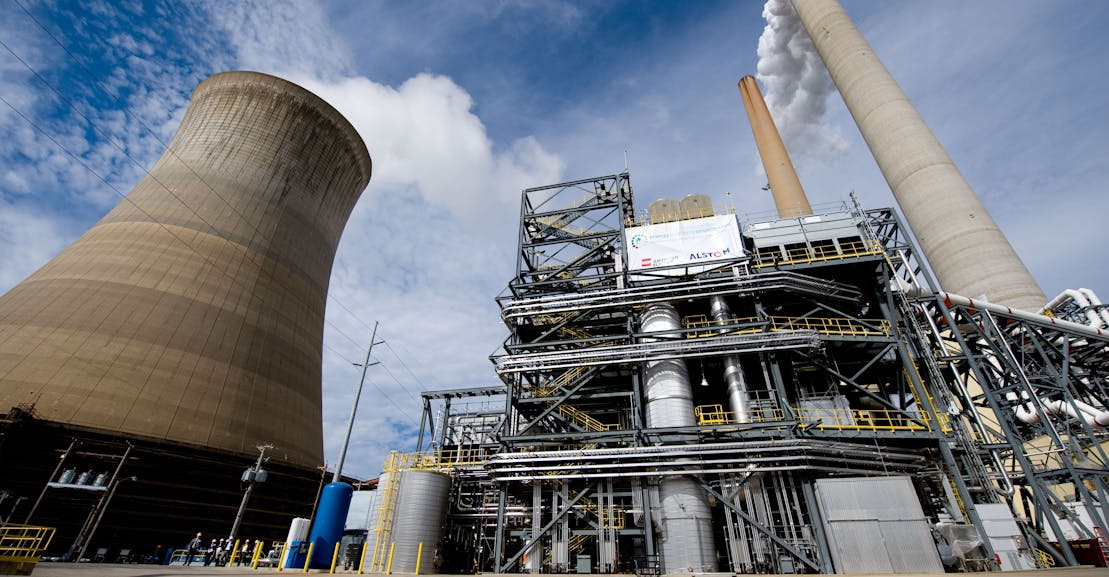Between 2010 and 2018, the Department of Energy poured $5 billion worth of research and development funding into carbon-capturing technologies, which aim to extract the greenhouse gas from power plants and other industrial activities, limiting the extent to which they warm the planet. In 2018, Congress also passed a generous tax break known as 45Q, encouraging companies to partake. This summer, however, the only coal-fired power plant capturing a meaningful amount of carbon in the United States—the country’s main showcase for that technology—unceremoniously closed down following months of inactivity. It’ll be “mothballed” (switched off) until market conditions improve.
Carbon capture and storage, or CCS, has, at best, a patchy track record. But it’s wildly popular in the fossil fuel industry as a potential fix for the fundamental unsustainability of its business model. This past week has been a big one for carbon capture boosterism. One bipartisan amendment in H.R. 4447—the massive energy bill being debated in the House of Representatives this week—will give companies another 10 years to collect an existing tax credit for carbon capturing and storing carbon. A report out this week from the Global CCS Institute and Columbia University’s Center on Energy Policy argues that boosting government support for CCS will be key to making the technology viable. It recommends additional tax breaks, grants, and R&D funding. The Global CCS Institute, to note, was started with funding from the traditionally coal-friendly Australian government, and its paying membership includes several national governments as well as most of the world’s largest fossil fuel companies, among them ExxonMobil and Occidental Petroleum. Columbia’s Center on Global Energy Policy has received millions of dollars’ worth of donations from fossil fuel companies in recent years, including Cheniere Energy, BP, and ConocoPhillips. ExxonMobil, incidentally, announced on Tuesday that it’ll be expanding its carbon capture partnership with the company Global Thermostat.
Carbon capture—which is an umbrella term for many different technologies—can broadly be divided into two categories: carbon captured directly from the air, and carbon captured from power plants and industrial processes. In theory, the carbon can simply be sequestered in rock formations. Often, though, that captured carbon is transported via pipeline to be injected into oil wells in order to dig up more fossil fuels, in a process known as enhanced oil recovery. Direct air capture uses contraptions that look like air conditioners to draw carbon down from the air, usually funneling it into novel uses like carbonating soft drinks.
This is all well and good; it will be a great development if and when these technologies become commercially viable. For now, that seems a long way off. And the gap between wish and reality is becoming increasingly worrisome as everyone from fossil fuel executives to establishment politicians to the Intergovernmental Panel on Climate Change invests an uncomfortable amount of faith in technologies that are still operating on a remarkably small scale. Many national and international targets for emissions reductions, at present, assume that transitioning to renewables and various economic changes can get us part of the way there and that new carbon capture technologies will emerge to cover the gap by 2050. If a government, politician, or corporation calls to achieve “net-zero” emissions by some date, that’s most likely what they mean.
The carbon capture project that shut down last month—Petra Nova, capturing carbon from one coal-burning unit of a power plant near Houston—wasn’t switched off because it couldn’t capture carbon. It seems to have been pretty good at that, though exact amounts remain the subject of some debate. The coal whose fumes Petra Nova was designed to capture, however, is rapidly becoming more expensive than other forms of fuel, including renewables. And the business model for keeping Petra Nova going simply didn’t work without being able to funnel lots of the carbon dioxide captured into digging up oil; current low oil prices, in turn, meant fewer customers willing to buy up excess carbon to inject into active wells.
